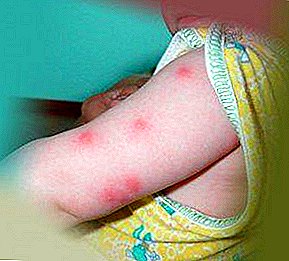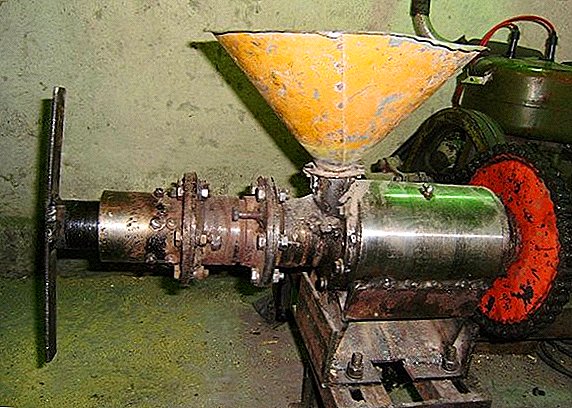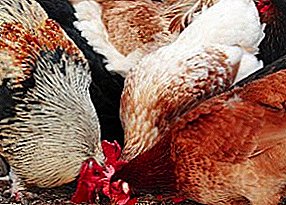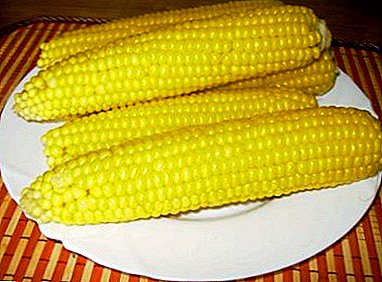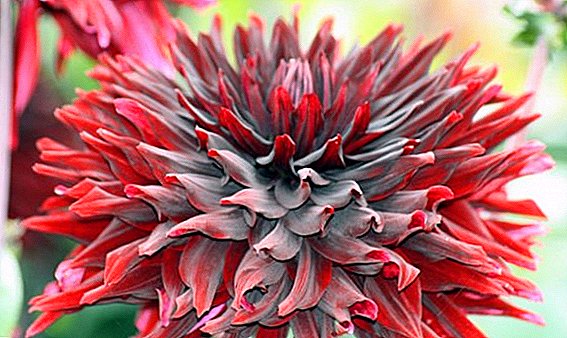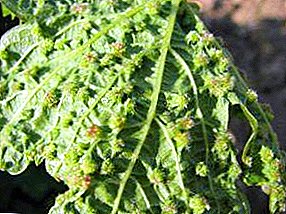
Every grape lover and vineyard worker wants the fruits of the grapes to bring maximum benefit and taste. The quality of the grapes depends on many factors.
Caring for vineyards requires a lot of attention. In order for the fruits of the grapes to be not only beautiful and tasty, but also useful, it is necessary to carefully monitor the soil and trees.
There are many pests that are not averse to eat such tasty fruits. One of the most dangerous pests - Phylloxera.
If you encounter such a pest in your vineyard, then in our article you will learn all the peculiarities of its origin and its control.
Read all about table grapes.
Early grapes for wine: //rusfermer.net/sad/vinogradnik/sorta-vinograda/vinnye-sorta-vinograda.html
Read about plum planting here.
Signs of phylloxera
Phylloxera (Viteus vitifolii) - it is a very small aphid size up to 1 mm oval with red eyes, which settles in the root system. However, depending on the type of phylloxera, damage to both the root system and the entire surface, including the leaves, is possible.
Phylloxera root
The root phylloxera looks like an oval larva without wings of yellowish color with sucking proboscis and antennae.
 As a rule, she lives in the root system, sucks the juice from the roots and appears bloating. After that, the root system rots, respectively, over time, the plant may die.
As a rule, she lives in the root system, sucks the juice from the roots and appears bloating. After that, the root system rots, respectively, over time, the plant may die.
Also aphid is able to reproduce by laying eggs. During the year aphid can give about 14 generations. From phylloxera larvae appear large females and small males, which have wings.
With the help of wings, the aphid can be found and multiply around the entire perimeter of the plant. The root species of phylloxera is usually distributed in European grape varieties.
Phylloxera
There is also a species of leaf phylloxera, which settles on the leaves of the vineyard and there, in full, affects the plant, mainly the mother plants of the vine rootstocks.
Leaf phylloxera with short proboscis dirty yellow forms peculiar galls on leaves. In these galls, new larvae live, feed and grow, which form both root and leaf species.
 In winter, the root aphid does not die, but lives also in the roots and waits in the wings. With the first spring days, the larvae begin their activity in the form of feeding and laying fresh eggs in the cracks of wood, their number reaches more than one hundred.
In winter, the root aphid does not die, but lives also in the roots and waits in the wings. With the first spring days, the larvae begin their activity in the form of feeding and laying fresh eggs in the cracks of wood, their number reaches more than one hundred.
After two weeks, the eggs give the larvae, which after several molts turn into full-fledged females, which are also able to lay eggs.
During the summer, there is a reproduction of about 8 generations of phylloxera. The first and second instar larvae also winter in rhizomes.
The damage of bushes and roots is checked, as far as the roots are swollen from sucking all the juices out of them, rotten areas are also a sign of phylloxera infection. Also, the bushes are characterized by lag in growth, reduced yield.
Details of the verification technique can be studied in the special book "Grape Phylloxera" by I. Kazas and A. Garkovenko.
Health in your own garden. Learn the beneficial properties of cherries.
Useful properties of peaches: //rusfermer.net/sad/plodoviy/posadka-sada/poleznye-svojstva-persika-i-sushhestvennye-momenty-pri-ego-vysadke.html
Causes of phylloxera
You should choose the right grape varieties, carefully select the soil for cultivation and the climate in which these fruits can develop favorably. Agrotechnics also plays an important role.
Phylloxera can also be picked up from untested vendors of planting material in the markets. At the same time, it can be carried with the help of shoes, materials for planting and processing, with pegs and so on. This is how phylloxera appeared in Russia.
Fighting phylloxera
The main form of struggle with phylloxera is quarantine. It is necessary to carry out only legal deliveries of grape varieties, to exclude purchases from unfamiliar sellers.
One of the main ways to combat this pest is disinfection of planting material. There are two methods of disinfection - the wet method and the fumigation method.
 The wet method is used at the time when the phylloxera is very active, then it is effective, for this purpose, an emulsion of the gamma isomer of hexachlorocyclocladexane is used.
The wet method is used at the time when the phylloxera is very active, then it is effective, for this purpose, an emulsion of the gamma isomer of hexachlorocyclocladexane is used.
Fumigation method is disinfected by specialized inspection teams that carry out plant quarantine and use it in the period of calm phylloxera.
To prevent young bushes from infestation by aphids, they put polyethylene cover on saplings and sow deep in the soil in their permanent place.
Care must be taken that the bushes are not overloaded with the number of fruits, and also not densely planted. This reduces the resistance to phylloxera.
The chemical method struggles with the leaf type of phylloxera, which excludes the appearance of fungal diseases. For this, spraying is used in two stages: the first is when buds bud and shoots appear, and the second is when 10 leaves develop.
If galls were found on the leaflets that followed phylloxera due to the lesion, then spraying is carried out again.
Mint - natural medicines. Read about the healing properties of mint.
Bilberry, especially planting and care: //rusfermer.net/sad/yagodnyj-sad/posadka-yagod/vyrashivanie-sostav-i-poleznye-svojstva-cherniki.html
Inoculated cultures are less susceptible to phylloxera, this is the way to get rid of this pest in the West. As a rule, for this were used stocks that are resistant to the appearance of phylloxera.
These are mainly hybrid stocks, they are not only phyllocero-resistant, they also prevent the occurrence of carbonate in soils, they are perfectly combined with grafted varieties on these stocks. Also, care must be taken to ensure that climate and soil conditions allow for their inoculation.
Together with preventive methods of struggle, there are a number of agronomic techniques. First of all, you need to follow the land in which the seedlings are planted. In the sandy lands, phylloxera fails to advance and the pests do not survive, in dry soils the root system will rot less.
 If it is not possible to plant grapes in the sandy ground, then one should dig a deep and wide hole, fill up the voids with sandy ground. Thus, phylloxera will not be favorable conditions for development.
If it is not possible to plant grapes in the sandy ground, then one should dig a deep and wide hole, fill up the voids with sandy ground. Thus, phylloxera will not be favorable conditions for development.
Sand requires frequent watering, but it is better to water more often than to fight with phylloxera.
The defeat of vineyards by this pest is one of the main problems in the cultivation of full fruits. Considering all the nuances of phylloxera appearance, its reproduction and features of a lesion, it is desirable to initially understand the problem and begin to fight it.
It should also be remembered that much depends on the vigilance of the owners of vineyards. As already mentioned, the phylloxera can be wound up not only with saplings, but also with many other things not related to garden utensils.


 Read all about table grapes.
Read all about table grapes. Health in your own garden. Learn the beneficial properties of cherries.
Health in your own garden. Learn the beneficial properties of cherries. Mint - natural medicines. Read about the healing properties of mint.
Mint - natural medicines. Read about the healing properties of mint.
